Hide and seek: inside the intricate world of Parisian jeweller Elie Top

It’s an age-old fine jeweller’s delight to include hidden elements in special pieces, just as Elie Top has done with his debut collection. Pictured (right) is Top in his maison's first salon, where a 1970s Ettore Sottsass chandelier pinpoints jewels in a glass vitrine built into the lacqured anthracite-top table by Maison Darré, while the custom made carpet reflects the house's logo.
What makes Elie Top’s eponymous jewellery designs so compelling is their secret nature. It’s an age-old fine jeweller’s delight to include hidden elements in special pieces, giving the wearer a unique sense of knowing something about their jewellery that only they know and that others can’t see.
To that effect, Top’s bracelets, earrings and necklaces contain an intricately worked element. But the covert nature of his articulated designs is not subtly secret. More in keeping with the horologist’s craft, once discovered, they take the wearer and the viewer in a new direction, suggesting a story that neither could possibly know.
As Vincent Darré, designer of Top’s Rue St Honore salon, featured in our September issue (W*198) , says: 'To capture the mood of Elie’s jewellery is to realise that it has an almost metaphysical nature – like the sign of your horoscope,' he explains. 'Planets and stars and the mechanical narrative make his designs not like jewellery but often more like horology. It’ a real universe.'

What makes Top’s eponymous jewellery designs so compelling is its secret nature
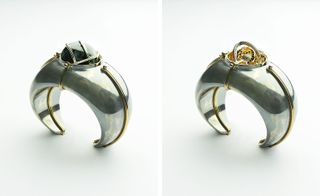
To that effect, Top’s bracelets, earrings and necklaces contain an intricately worked element
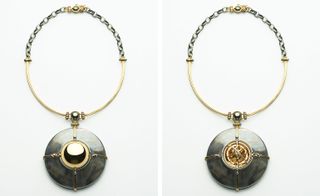
But the covert nature of his articulated designs is not subtly secret. More in keeping with the horologist’s craft, once discovered, they take the wearer and the viewer in a new direction, suggesting a story that neither could possibly know

The salon's 1930s frosted glass doors provide a grand entrance to his showroom.

As Vincent Darré, designer of Top’s Rue St Honore salon, featured in our September issue (W*198) , says: 'To capture the mood of Elie’s jewellery is to realise that it has an almost metaphysical nature – like the sign of your horoscope,' he explains
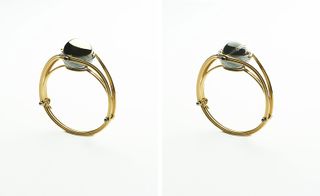
'Planets and stars and the mechanical narrative make his designs not like jewellery but often more like horology. It’ a real universe,' adds Darré

Top is perhaps best known for his role as Lanvin's accessories director, single-handedly changing the way we viewed costume jewellery in the noughties

'Mécaniques Célestes' unites Top's love of costume jewellery's bold statement-making power with the intricate mechanics of exceptional fine jewellery

The creative has dedicated his first big bang to cosmogony, working with kinetic metal spheres that concealed or revealed his precious stone globes inside
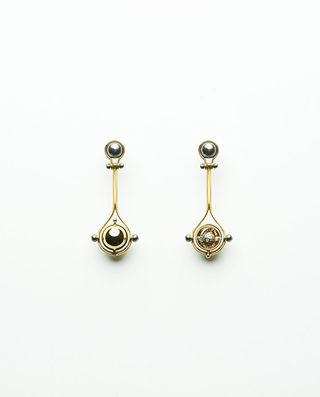
These one-of-a-kind orbs are then circled by a star galaxy of diamonds, fusing the geometric and Baroque
Wallpaper* Newsletter
Receive our daily digest of inspiration, escapism and design stories from around the world direct to your inbox
Caragh McKay has been a contributing editor at Wallpaper* since 2014. She was previously watches & jewellery director and is currently our resident lifestyle & shopping editor. Caragh has produced exhibitions and created and edited titles for publishers including the Daily Telegraph. She regularly chairs talks for luxury houses, Van Cleef & Arpels and Cartier among them. Caragh’s current remit is cross-cultural and her recent stories include the curious tale of how Muhammad Ali met his poetic match in Robert Burns and how a Martin Scorsese film revived a forgotten Osage art.
-
 Inside Valentino’s glamorous new Sloane Street store, inspired by the art of haute couture
Inside Valentino’s glamorous new Sloane Street store, inspired by the art of haute coutureThe latest in Valentino’s ‘The New Maison’ store concept opens on London’s Sloane Street this week, offering an enveloping marble and carpet-clad space of ‘intimacy and uniqueness’
By Jack Moss Published
-
 Aesop’s Salone del Mobile 2024 installations in Milan are multisensory experiences
Aesop’s Salone del Mobile 2024 installations in Milan are multisensory experiencesAesop has partnered with Salone del Mobile to launch a series of installations across Milan, tapping into sight, touch, taste, and scent
By Hannah Tindle Published
-
 Dial into the Boring Phone and more smartphone alternatives
Dial into the Boring Phone and more smartphone alternativesFrom the deliberately dull new Boring Phone to Honor’s latest hook-up with Porsche, a host of new devices that do the phone thing slightly differently
By Jonathan Bell Published
-
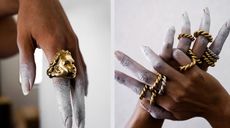 Emerging jewellery designers to get to know
Emerging jewellery designers to get to knowThese independent, new and emerging jewellery designers and brands from New York to Paris are firmly on our radar
By Hannah Silver Published
-
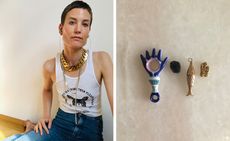 Jewellery designers share their most precious personal pieces
Jewellery designers share their most precious personal piecesA host of jewellers give us a peek at the jewellery which brings them joy and solace
By Hannah Silver Published
-
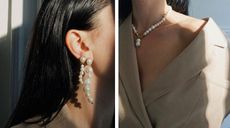 Playing it cool: pearls are having a moment
Playing it cool: pearls are having a momentWe've been deep-diving into boutiques around the world to find the very best calcium carbonate in minute crystalline form. It seems jewellers have been busy rethinking pearls, with contemporary (and often affordable) results
By Hannah Silver Published
-
 Eternity rings for the modern couple
Eternity rings for the modern coupleEternity rings, whether sleekly minimalist or sprinkled in diamonds, can be a chic and contemporary love token
By Hannah Silver Published
-
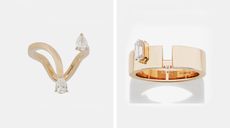 Alternative engagement rings with an edge
Alternative engagement rings with an edgeAs the sales of engagement rings sky-rocket during lockdown, enjoy our off-kilter curation of edgy and unconventional engagement rings
By Hannah Silver Last updated
-
 Hair jewellery to covet and collect
Hair jewellery to covet and collectToday’s hair jewellery is both practical and pretty. We're pinning our hopes on these simple and elegant accessories
By Hannah Silver Last updated
-
 CryptoPunks come to life on Tiffany & Co pendants
CryptoPunks come to life on Tiffany & Co pendantsTiffany & Co has partnered with blockchain infrastructure company Chain to create custom pendants and NFTiffs
By Hannah Silver Last updated
-
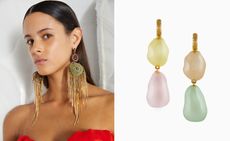 Andreas Kronthaler’s costume jewellery for Vivienne Westwood is fun, flirty and fabulous
Andreas Kronthaler’s costume jewellery for Vivienne Westwood is fun, flirty and fabulousAndreas Kronthaler’s new jewellery draws on romantic and theatrical motifs
By Hannah Silver Last updated